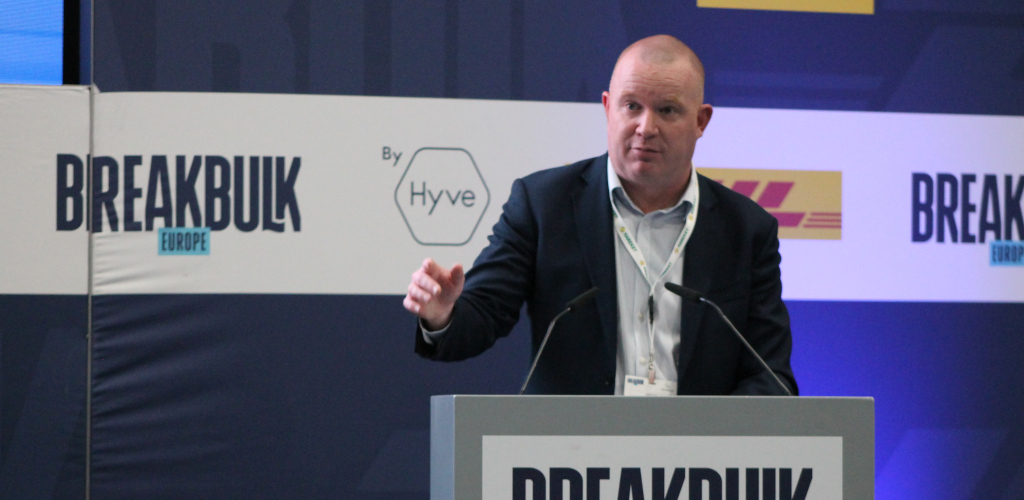Challenges Lie Ahead as Oil and Gas Sector Still Dominate Investment

By Liesl Venter
The offshore wind industry is on the brink of a remarkable period of expansion, presenting many highly profitable opportunities across the globe.
However, the realisation of these prospects may need more time due to ongoing capital expenditure commitments within the oil and gas sector. Neil Golding, executive director of the London-based Energy Industries Council, or EIC, said offshore wind opportunities could take at least two years to come to fruition.
Delivering his keynote address at Breakbulk Europe in Rotterdam, he told delegates that despite renewables including offshore wind and hydrogen comprising a significant portion of new project announcements, most investment still flowed into the established oil and gas industry.
“The renewable energy sector, particularly offshore wind, has witnessed a surge in new project announcements, with governments and corporations worldwide recognising the urgency of transitioning towards sustainable energy sources,” Golding said, pointing to a total of 2,882 projects added to the EIC data stream in 2022.
“So far this year, 1,683 projects have been announced or added to the database. Renewables make up 47 percent, and with offshore wind, the number increases to 53 percent. These figures have been driven largely by onshore wind and solar announcements. However, we have also seen growth in the number of offshore wind projects announced recently compared to 2021.”
New announcements in oil and gas projects remained comparatively low compared to the renewable sector.
“It is when we look at the near to medium-term investment figures that the picture changes slightly,” said Golding. “Of the US$8.15 trillion of investment expected across the energy sectors between now and 2028, some US$3.51 trillion of capex is expected to be invested across the oil and gas sectors. Whilst this slice of the pie has continued to decrease over the past three years since we have been running this data, it does indicate that oil and gas will continue to see investments against a backdrop of conflict, energy security and affordability.”
According to Golding, renewables will continue to grow in terms of investment, driven by the commoditised solar and onshore wind, as will the other cleantech sectors in line with the continued growth in announcements. “The scale-up of renewable generation will be needed to deliver the hydrogen ambition.”
He said the real opportunity for the supply chain was in the renewables sector, albeit with challenges. “We are going to see continued growth in the number of announcements. In the offshore wind sector, markets for new capacity continue to be seen, with China set to dominate and increase its capacity. At least 300 gigawatts of capacity is proposed in the top 15 markets by 2028. This will require huge scaling up of manufacturing across all equipment types.”
The supply chain would also need to be addressed as it was not developed enough to handle the increase in projects. “We already have a globally constrained market supply. It is more than just the turbine manufacturing; it is the cables and foundations, the vessels and other transport equipment that will all need to be scaled up.”
He said significant investment in port infrastructure was also required if the projects were to be delivered in the expected timelines between now and 2030. “The opportunity is undeniably present, but we anticipate it will take at least 12 to 24 months before it materialises into a tangible reality.”









.png?ext=.png)









.png?ext=.png)






.png?ext=.png)



